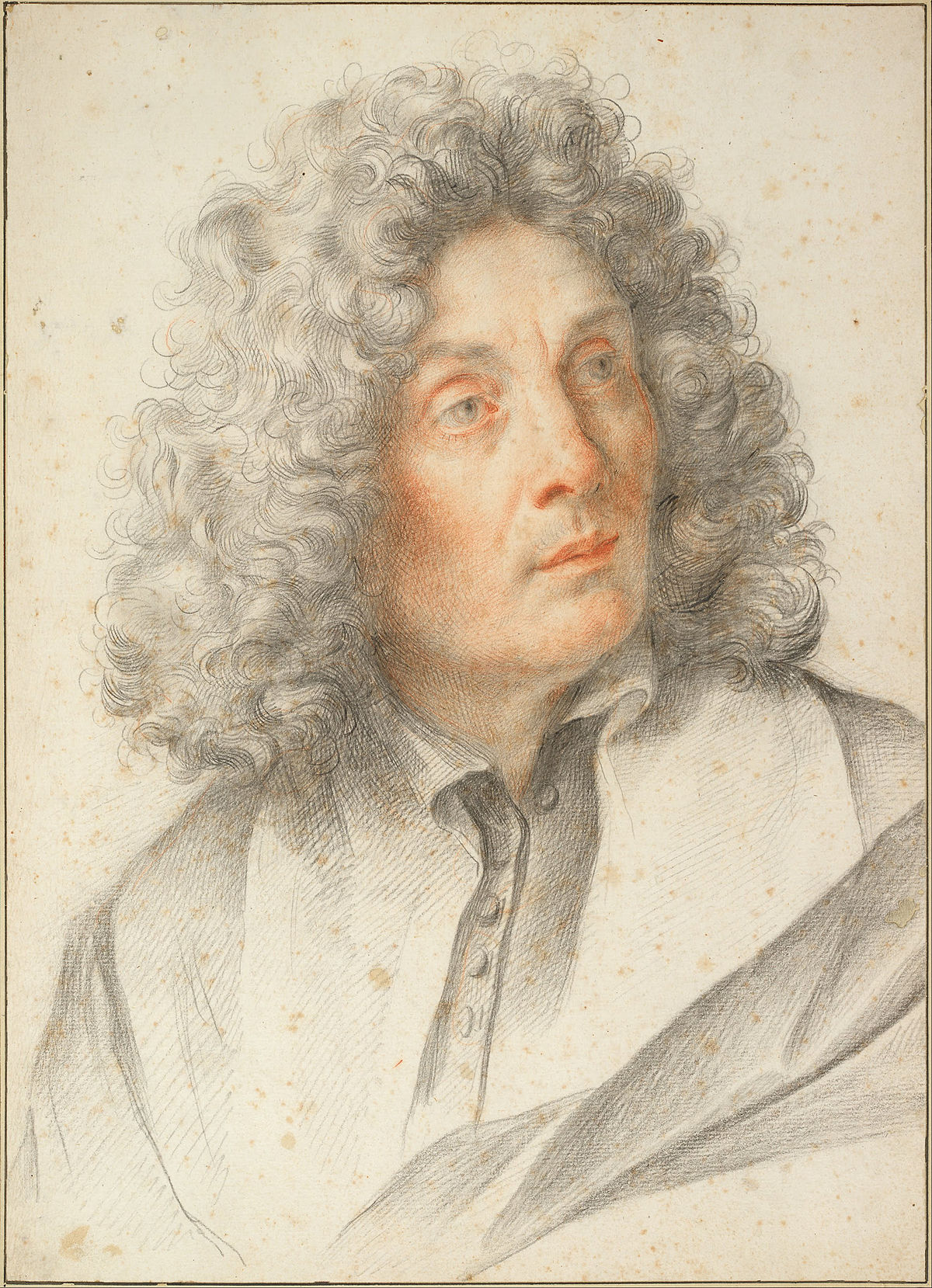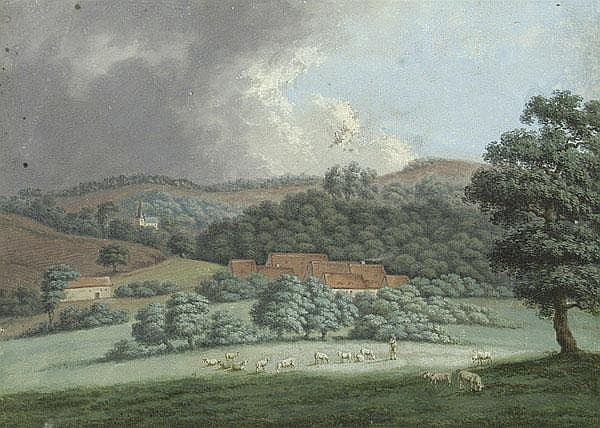
Old and newer masters — Art and antiques

Pieter de Ring was a Dutch painter who specialised in still lifes. He became famous for his rich banquet depictions of fruit, shrimp, oysters, musical instruments, books and precious objects such as nautilus shells or Chinese porcelain.
In his youth, he worked as a bricklayer during the day and drew in the evening; the other family members all worked in the fabric industry. After painting a number of pictures, he apprenticed himself to Jan Davidsz. de Heem with his grandfather's permission. In 1647 he became a founding member of the Guild of Saint Lucas.

Franz Werner von Tamm, known as Dapper, was a German Baroque painter. One of the most famous masters of German still life in the late 17th and early 18th centuries.
Franz Werner von Tamm studied painting in Italy in the studio of Carlo Maratta. In 1701 he was invited to Vienna as court painter to Emperor Leopold I, where he remained until his death.
He painted with a soft brush live and dead poultry as well as flowers and animals, rather decoratively with an immediate mood.

Abraham Janssens was a Flemish painter, who is known principally for his large religious and mythological works, which show the influence of Caravaggio. He was the leading history painter in Flanders prior to the return of Rubens from Italy.

David Teniers the Younger was a Flemish Baroque painter, printmaker, draughtsman, miniaturist painter, staffage painter, copyist and art curator. He was an extremely versatile artist known for his prolific output. He was an innovator in a wide range of genres such as history painting, genre painting, landscape painting, portrait and still life. He is now best remembered as the leading Flemish genre painter of his day. Teniers is particularly known for developing the peasant genre, the tavern scene, pictures of collections and scenes with alchemists and physicians.
He was court painter and the curator of the collection of Archduke Leopold Wilhelm, the art-loving Governor General of the Habsburg Netherlands. He created a printed catalogue of the collections of the Archduke. He was the founder of the Antwerp Academy, where young artists were trained to draw and sculpt in the hope of reviving Flemish art after its decline following the death of the leading Flemish artists Rubens and Anthony van Dyck in the early 1640s. He influenced the next generation of Northern genre painters as well as French Rococo painters such as Antoine Watteau.

Carlo Maratta, an Italian painter, was a prominent figure in the Roman school of art during the late 17th century. Known for his classical approach to Baroque painting, Carlo Maratta's works were deeply influenced by the styles of Raphael and Andrea Sacchi, blending classical grandeur with Baroque expressivity. His training under Sacchi and subsequent exposure to Pietro da Cortona's coloristic style significantly shaped his artistic development.
Carlo Maratta's career flourished with a series of public and official commissions, making him a leading painter in Rome, especially after Bernini's death in 1682. His portfolio includes religious paintings, altarpieces, portraits, and fresco cycles, with a notable emphasis on paintings of the Madonna and Child, which reinterpreted High Renaissance motifs. His work was highly esteemed across Europe, influencing not only Italian art but also attracting the attention of English visitors on the Grand Tour.
One of Carlo Maratta's significant contributions to the art world was his involvement in painting restoration towards the end of his career, including works by Raphael and Carracci. This phase underscored his deep connection to the classical art tradition. Maratta passed away in Rome in 1713, leaving behind a legacy that continued to be celebrated in art history.
For art enthusiasts, collectors, and experts, Carlo Maratta's work offers a window into the transition between the Baroque and the emerging Rococo style, embodying a blend of dynamism and classical restraint. His paintings, many of which remain in situ in Roman churches, offer a testament to his enduring influence on Baroque classicism.
To stay updated on exhibitions and insights into Carlo Maratta's works, art aficionados are encouraged to subscribe for updates, ensuring access to the latest research and opportunities to view his celebrated works in museums and galleries around the world.

Nicolaes Pieterszoon Berchem was a highly esteemed and prolific Dutch Golden Age painter of pastoral landscapes, populated with mythological or biblical figures, but also of a number of allegories and genre pieces.
He was a member of the second generation of "Dutch Italianate landscape" painters. These were artists who travelled to Italy, or aspired to, in order to soak up the romanticism of the country, bringing home sketchbooks full of drawings of classical ruins and pastoral imagery. His paintings, of which he produced an immense number, (Hofstede de Groot claimed around 850, although many are misattributed), were in great demand, as were his 80 etchings and 500 drawings. His landscapes, painted in the Italian style of idealized rural scenes, with hills, mountains, cliffs and trees in a golden dawn are sought after. Berchem also painted inspired and attractive human and animal figures (staffage) in works of other artists, like Allaert van Everdingen, Jan Hackaert, Gerrit Dou, Meindert Hobbema and Willem Schellinks.

Paul Bril was a prominent Flemish painter, best known for his significant contributions to landscape painting. Born around 1554 in Antwerp, he later moved to Rome, where he became a central figure in the art scene, influencing the Italian and Northern European landscape painting traditions.
Paul Bril's early works were steeped in the Flemish manner, exhibiting a picturesque arrangement of landscape elements with dramatic contrasts of light and dark. His style evolved during his stay in Rome, influenced by the work of Annibale Carracci and Adam Elsheimer. By around 1605, Bril's compositions became more serene and classical, showcasing calmer transitions from foreground to background and embracing pastoral and mythological themes.
Paul Bril's contributions extended beyond his paintings. He was a respected figure in Rome's art community, becoming the first foreign director of the Accademia di San Luca in 1621. His patrons included some of the most influential families in Rome, and his work was sought after by collectors and fellow artists. Bril's influence was profound, impacting future generations of artists, including the Dutch Italianates and genre painters active in Rome.
His works can be found in prestigious galleries worldwide, illustrating his enduring legacy in the art world. For collectors and art and antiques experts, Paul Bril's work represents a significant period in the evolution of landscape painting, blending Flemish traditions with Italian classicism.
For those interested in exploring the captivating landscapes and historical significance of Paul Bril's art, staying informed about new product sales and auction events is essential. Signing up for updates can provide valuable insights and opportunities to acquire pieces associated with this influential artist.

Gerard Dou was a Dutch Golden Age painter, whose small, highly polished paintings are typical of the Leiden fijnschilders. He specialised in genre scenes and is noted for his trompe-l'œil "niche" paintings and candlelit night-scenes with strong chiaroscuro. He was a student of Rembrandt.

Aleksander Orłowski (Russian: Александр Осипович Орловский), a renowned Polish painter and sketch artist, was born on March 9, 1777, in Warsaw, within the Polish-Lithuanian Commonwealth. His journey into the arts began under challenging circumstances; he was the son of a tavern-keeper and his family was not wealthy. His early promise in art was nurtured by noble patron Izabela Czartoryska, who financed his initial education under the guidance of artist Jan Piotr Norblin.
Orłowski's artistic journey intersected with his military service during the Kościuszko Uprising, a major revolt against Imperial Russia and Prussia in 1794. This period of conflict significantly influenced his later works, which often depicted military scenes and the daily life of soldiers. After the partitions of Poland, Orłowski moved to Saint Petersburg in 1802, where he became a seminal figure in the development of lithography in the Russian Empire.
His oeuvre includes a wide array of subjects, from battle scenes to cultural depictions of everyday life in both Poland and Russia. Notable works such as "Battle Scene" and "Cossack Fighting Off A Tiger" showcase his skill in capturing dynamic movement and drama. His works are preserved in esteemed institutions such as The Russian Museum and The Tretyakov Gallery, highlighting their historical and artistic value.
Orłowski's impact extended beyond the canvas; he was also mentioned in literary works by notable authors like Adam Mickiewicz and Alexander Pushkin, which underscores his cultural significance in the 19th century.
For collectors and experts in art and antiques, Aleksander Orłowski's works represent a crucial segment of Eastern European art history. To stay informed about new discoveries or auction events related to his works, consider subscribing for updates. This subscription ensures you receive timely information tailored to your interests, directly relating to new sales and significant events around Orłowski's art.

Johann Friedrich August Tischbein was a German painter of the last quarter of the 18th and early 19th centuries. He is known as an academic painter of the Classical era, specializing in portraits, a representative of a large dynasty of artists.
August Tischbein was court painter to Prince Friedrich Karl August and Prince Leopold III Friedrich Franz. He traveled to Italy, where he improved his skills in portrait painting, and achieved success in Berlin and Dresden. In 1799, the artist became director of the Academy of Fine Arts in Leipzig. From 1806 to 1808 he worked in St. Petersburg, where he created portraits of courtiers and representatives of the aristocracy. His works are characterized by strict composition, exquisite coloring and sentimental style of the era. Several of his paintings can be found in the St. Petersburg Hermitage.

Jacques Callot was a baroque printmaker and draftsman from the Duchy of Lorraine (an independent state on the north-eastern border of France, southwestern border of Germany and overlapping the southern Netherlands). He is an important person in the development of the old master print. He made more than 1,400 etchings that chronicled the life of his period, featuring soldiers, clowns, drunkards, Gypsies, beggars, as well as court life. He also etched many religious and military images, and many prints featured extensive landscapes in their background.

William Hogarth was an English painter, engraver, pictorial satirist, social critic, editorial cartoonist and occasional writer on art. His work ranges from realistic portraiture to comic strip-like series of pictures called "modern moral subjects", and he is perhaps best known for his series A Harlot's Progress, A Rake's Progress and Marriage A-la-Mode. Knowledge of his work is so pervasive that satirical political illustrations in this style are often referred to as "Hogarthian".

William Hogarth was an English painter, engraver, pictorial satirist, social critic, editorial cartoonist and occasional writer on art. His work ranges from realistic portraiture to comic strip-like series of pictures called "modern moral subjects", and he is perhaps best known for his series A Harlot's Progress, A Rake's Progress and Marriage A-la-Mode. Knowledge of his work is so pervasive that satirical political illustrations in this style are often referred to as "Hogarthian".

William Hogarth was an English painter, engraver, pictorial satirist, social critic, editorial cartoonist and occasional writer on art. His work ranges from realistic portraiture to comic strip-like series of pictures called "modern moral subjects", and he is perhaps best known for his series A Harlot's Progress, A Rake's Progress and Marriage A-la-Mode. Knowledge of his work is so pervasive that satirical political illustrations in this style are often referred to as "Hogarthian".
































































